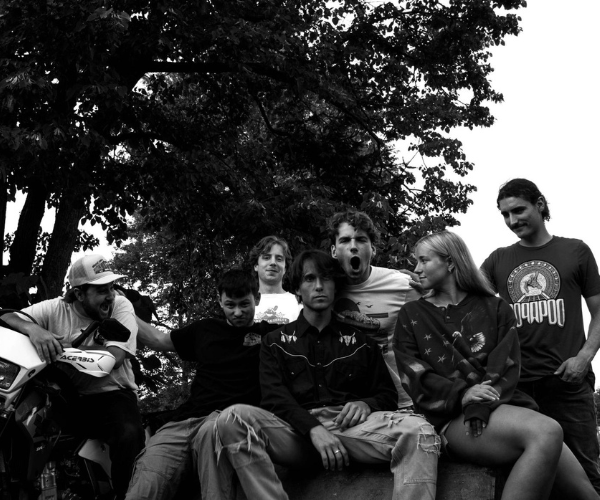Mimi Smith wanted to make Cleveland a prettier place to live. So in 1973, she took a thread of an idea from the modern housewife: A slipcover does wonders to freshen up a living room, so how about slipcovers for the Terminal Tower — one of purple velvet for winter and one of pink polka dots for summer?
“I figured it probably never would have happened, but I would have loved it if it did!” Smith says now. “I didn’t really think they would consider anything like this.”
But in a 1974 Cleveland Magazine story, Nina Gibans of the Cleveland Area Arts Council apparently did. Gibans — whose tone seems politely skeptical but very curious — wondered about practical concerns such as cost and the viability of white fabric staying white in our “industrial” city.
Smith figured that it would take approximately 25,216 yards of material per slipcover, at a retail cost of $126,080 and 5,120 hours of labor ($15,360 at $3 an hour!). Today’s approximate cost for this project: $757,248. The important part of the process, Smith reflects, was the idea inception and design, although she was serious about its plausibility.
“This was really early feminist art. I was thinking in terms of translating what a woman would do into monumental sculpture,” Smith says. “It was about how a woman would beautify Cleveland.”
Smith moved to Cleveland Heights in 1972 when her husband secured a Cleveland State University teaching post in mathematics. Smith had been specializing in clothing sculptures, like a maternity dress with an abdominal dome made of transparent vinyl.
“I wanted to say something about my life as a young woman in the United States, and the concerns that I felt were common,” Smith says.
When she moved into her new home, she began creating pieces that are still shown in museums and exhibits today. Her work can be seen at the National Museum of Women in the Arts and the Museum of Contemporary Art Los Angeles, and in shows such as
“I figured it probably never would have happened, but I would have loved it if it did!” Smith says now. “I didn’t really think they would consider anything like this.”
But in a 1974 Cleveland Magazine story, Nina Gibans of the Cleveland Area Arts Council apparently did. Gibans — whose tone seems politely skeptical but very curious — wondered about practical concerns such as cost and the viability of white fabric staying white in our “industrial” city.
Smith figured that it would take approximately 25,216 yards of material per slipcover, at a retail cost of $126,080 and 5,120 hours of labor ($15,360 at $3 an hour!). Today’s approximate cost for this project: $757,248. The important part of the process, Smith reflects, was the idea inception and design, although she was serious about its plausibility.
“This was really early feminist art. I was thinking in terms of translating what a woman would do into monumental sculpture,” Smith says. “It was about how a woman would beautify Cleveland.”
Smith moved to Cleveland Heights in 1972 when her husband secured a Cleveland State University teaching post in mathematics. Smith had been specializing in clothing sculptures, like a maternity dress with an abdominal dome made of transparent vinyl.
“I wanted to say something about my life as a young woman in the United States, and the concerns that I felt were common,” Smith says.
When she moved into her new home, she began creating pieces that are still shown in museums and exhibits today. Her work can be seen at the National Museum of Women in the Arts and the Museum of Contemporary Art Los Angeles, and in shows such as
WACK! Art and the Feminist Revolution.
Smith had other ideas for Cleveland at the time, including covering streets with Formica or carpeting, and draping houses from various economic backgrounds with the same herringbone tweed fabric, to equalize them. She moved after a year in Cleveland but took with her the big ideas — she wrote to the mayor of New York City to propose dressing up the Statue of Liberty in seasonal ensembles.
Smith, now 65, has fond memories of the time she lived here. Although she eventually abandoned the pursuit of draping public structures in unconventional coverings, her work carries on the theme of what it means to be a woman at different ages and in different times.
“My work parallels my life,” Smith says. “When I was younger, it was about younger women’s issues. A lot of my recent work has been about aging.”
Smith is currently working on a hand-drawn timeline of the shoes she has worn, and expects to wear, throughout her life. “Cleveland was really good for my work,” Smith says. “It was an inter-esting time.”
Smith had other ideas for Cleveland at the time, including covering streets with Formica or carpeting, and draping houses from various economic backgrounds with the same herringbone tweed fabric, to equalize them. She moved after a year in Cleveland but took with her the big ideas — she wrote to the mayor of New York City to propose dressing up the Statue of Liberty in seasonal ensembles.
Smith, now 65, has fond memories of the time she lived here. Although she eventually abandoned the pursuit of draping public structures in unconventional coverings, her work carries on the theme of what it means to be a woman at different ages and in different times.
“My work parallels my life,” Smith says. “When I was younger, it was about younger women’s issues. A lot of my recent work has been about aging.”
Smith is currently working on a hand-drawn timeline of the shoes she has worn, and expects to wear, throughout her life. “Cleveland was really good for my work,” Smith says. “It was an inter-esting time.”



